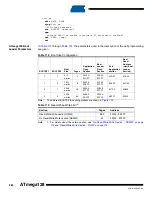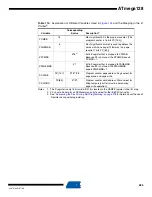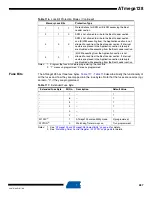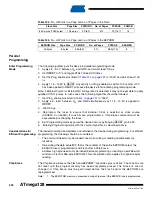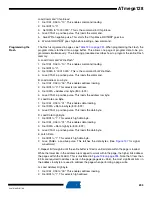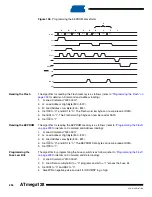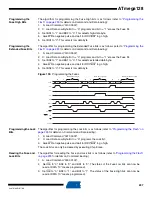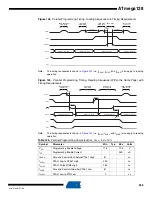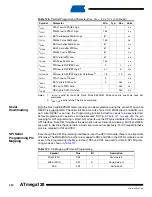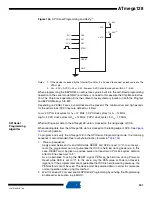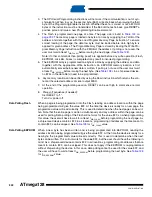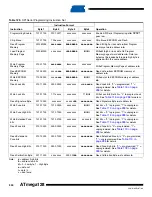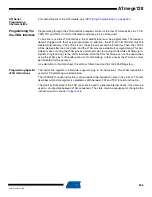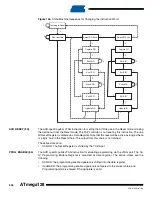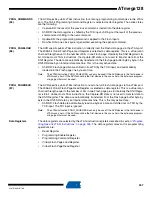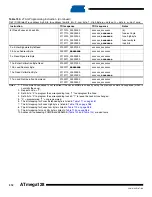
297
2467S–AVR–07/09
ATmega128
Programming the
Fuse High Bits
The algorithm for programming the Fuse High bits is as follows (refer to
for details on Command and Data loading):
1.
A: Load Command “0100 0000”.
2.
C: Load Data Low Byte. Bit n = “0” programs and bit n = “1” erases the Fuse bit.
3.
Set BS1 to “1” and BS2 to “0”. This selects high data byte.
4.
Give WR a negative pulse and wait for RDY/BSY to go high.
5.
Set BS1 to “0”. This selects low data byte.
Programming the
Extended Fuse Bits
The algorithm for programming the Extended Fuse bits is as follows (refer to
for details on Command and Data loading):
1.
A: Load Command “0100 0000”.
2.
C: Load Data Low Byte. Bit n = “0” programs and bit n = “1” erases the Fuse bit.
3.
Set BS2 to “1” and BS1 to “0”. This selects extended data byte.
4.
Give WR a negative pulse and wait for RDY/BSY to go high.
5.
Set BS2 to “0”. This selects low data byte.
Figure 139.
Programming the Fuses
Programming the Lock
Bits
The algorithm for programming the Lock bits is as follows (refer to
for details on Command and Data loading):
1.
A: Load Command “0010 0000”.
2.
C: Load Data Low Byte. Bit n = “0” programs the Lock bit.
3.
Give WR a negative pulse and wait for RDY/BSY to go high.
The Lock bits can only be cleared by executing Chip Erase.
Reading the Fuse and
Lock Bits
The algorithm for reading the Fuse and Lock bits is as follows (refer to
for details on Command loading):
1.
A: Load Command “0000 0100”.
2.
Set OE to “0”, BS2 to “0”, and BS1 to “0”. The status of the Fuse Low bits can now be
read at DATA (“0” means programmed).
3.
Set OE to “0”, BS2 to “1”, and BS1 to “1”. The status of the Fuse High bits can now be
read at DATA (“0” means programmed).
RDY/BSY
WR
OE
RESET +12V
PAGEL
$40
DATA
DATA
XX
XA1
XA0
BS1
XTAL1
A
C
$40
DATA
XX
A
C
Write Fuse Low byte
Write Fuse high byte
$40
DATA
XX
A
C
Write Extended Fuse byte
BS2


